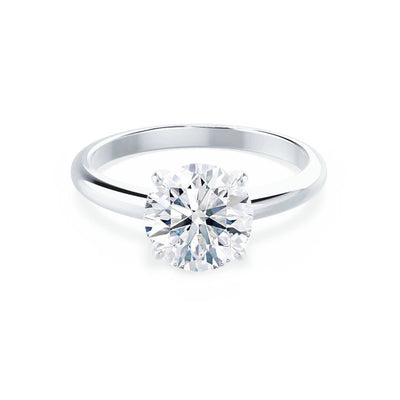In recent years, sustainability has become a defining factor in the fashion industry, prompting designers, brands, and consumers to seek ethical alternatives to traditional materials. One of the most significant innovations in this movement is the rise of lab-grown diamonds, a sustainable alternative to mined diamonds. As awareness grows about the environmental and ethical issues surrounding diamond mining, lab-grown diamonds are emerging as a key component of sustainable fashion. Their increasing popularity is reshaping the jewelry industry, offering a viable solution to the challenges posed by conventional diamond mining.
Lab-grown diamonds, also known as synthetic or cultured diamonds, are created in controlled laboratory environments using advanced technological processes that replicate the natural formation of diamonds. These diamonds are chemically, physically, and optically identical to their mined counterparts, making them indistinguishable even to experts without specialized equipment. The two primary methods used to create these diamonds are High Pressure High Temperature (HPHT) and Chemical Vapor Deposition (CVD), both of which ensure high-quality results while significantly reducing the environmental impact.
One of the primary benefits of lab-grown diamonds such as designs by ethical jewellery from Lily Arkwright in sustainable fashion is their reduced ecological footprint. Traditional diamond mining is notorious for its extensive environmental damage, including deforestation, habitat destruction, and soil erosion. Additionally, mining operations consume vast amounts of water and contribute to carbon emissions through heavy machinery and transportation. In contrast, lab-grown diamonds require significantly less energy and water, while also eliminating the need for land excavation. Many lab-grown diamond manufacturers are further enhancing sustainability by utilizing renewable energy sources, thereby reducing their carbon footprint even further.
Beyond environmental concerns, ethical considerations also play a crucial role in the growing demand for lab-grown diamonds. The traditional diamond mining industry has long been associated with human rights abuses, including forced labor, child labor, and conflict financing. The term “blood diamonds” or “conflict diamonds” refers to diamonds mined in war zones and sold to fund armed conflicts against governments. Despite efforts such as the Kimberley Process Certification Scheme, which aims to prevent the trade of conflict diamonds, loopholes still exist, making it challenging to ensure ethical sourcing. Lab-grown diamonds eliminate these concerns, as they are produced in controlled environments without any risk of human exploitation or unethical labor practices.
The rise of lab-grown diamonds has also revolutionized affordability and accessibility in the fashion industry. Mined diamonds undergo complex extraction, sorting, and distribution processes, which drive up their costs. In contrast, lab-grown diamonds can be produced more efficiently, leading to a lower price point. This affordability makes sustainable luxury more attainable for a broader audience, enabling more consumers to make ethical purchasing decisions without compromising on quality or beauty.
Fashion brands and designers are increasingly incorporating lab-grown diamonds into their collections, recognizing their value in sustainable fashion. Established jewelry brands such as Pandora, Brilliant Earth, and De Beers have expanded their offerings to include lab-grown diamonds, catering to the growing market of conscious consumers. Moreover, emerging designers are leveraging these diamonds to create innovative, sustainable jewelry pieces that align with modern aesthetics and ethical values. By integrating lab-grown diamonds into high fashion, the industry is promoting sustainability without sacrificing style or exclusivity.
Consumer awareness and preference are also playing a pivotal role in driving the adoption of lab-grown diamonds. Millennials and Gen Z, in particular, prioritize ethical and sustainable products, influencing market trends and business decisions. According to industry reports, an increasing number of consumers are actively seeking sustainable alternatives, and lab-grown diamonds perfectly align with these values. Social media and digital marketing have further amplified awareness, allowing consumers to make informed choices about their purchases.
While the future of lab-grown diamonds in sustainable fashion looks promising, challenges remain. Some traditionalists still perceive lab-grown diamonds as inferior to natural diamonds due to their synthetic origin, despite their identical properties. Additionally, there is an ongoing debate about the energy consumption of lab-grown diamond production, particularly when non-renewable energy sources are used. However, continuous advancements in technology and the growing commitment to sustainability among manufacturers are likely to address these concerns over time.
In conclusion, lab-grown diamonds are playing an essential role in the evolution of sustainable fashion by offering an ethical, environmentally friendly, and accessible alternative to mined diamonds. As the fashion industry continues to prioritize sustainability, the adoption of lab-grown diamonds is expected to grow, influencing both high-end and mainstream jewelry markets. By choosing lab-grown diamonds, consumers can contribute to a more sustainable and ethical future while still enjoying the timeless beauty and elegance of diamonds.


